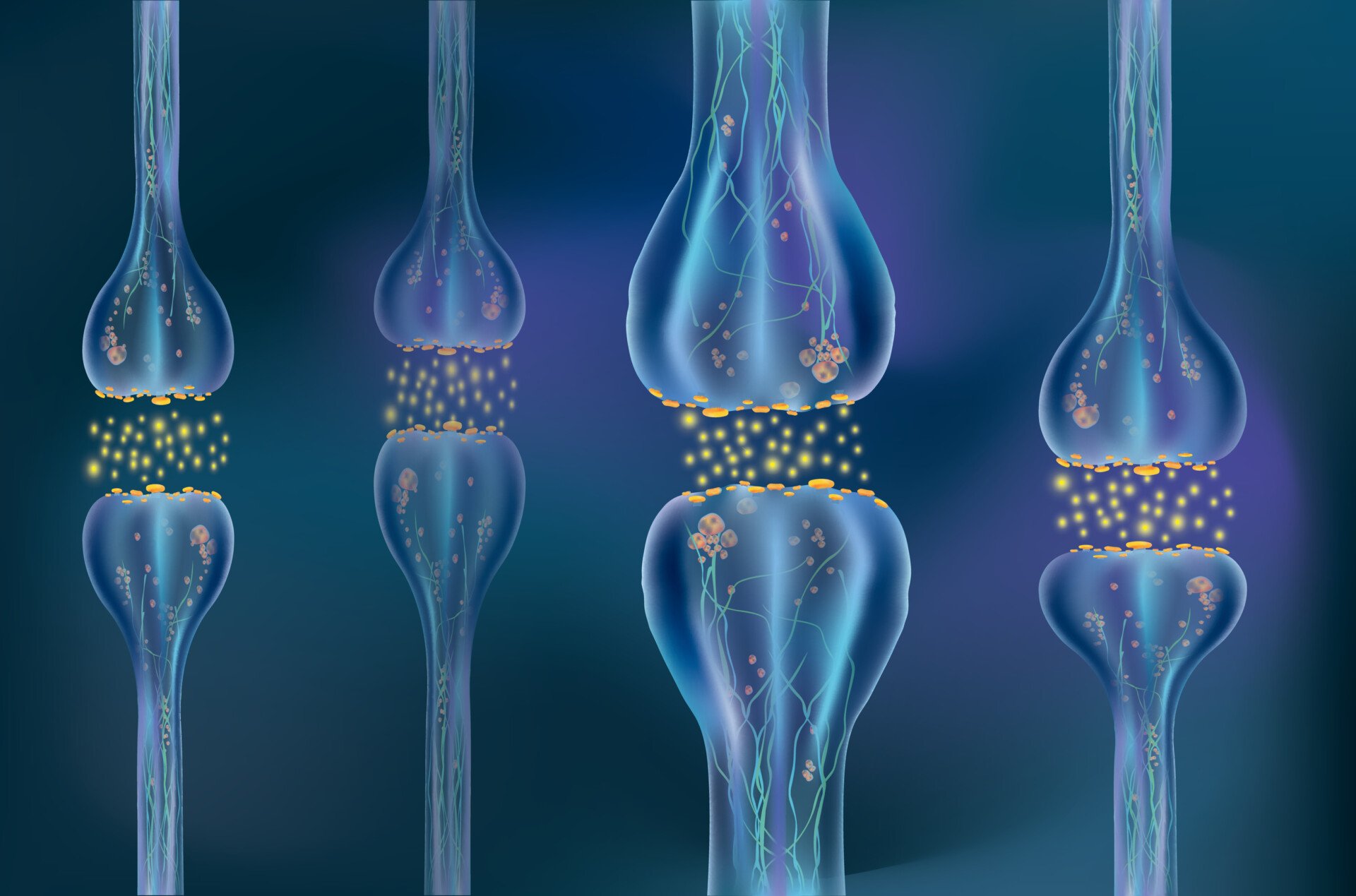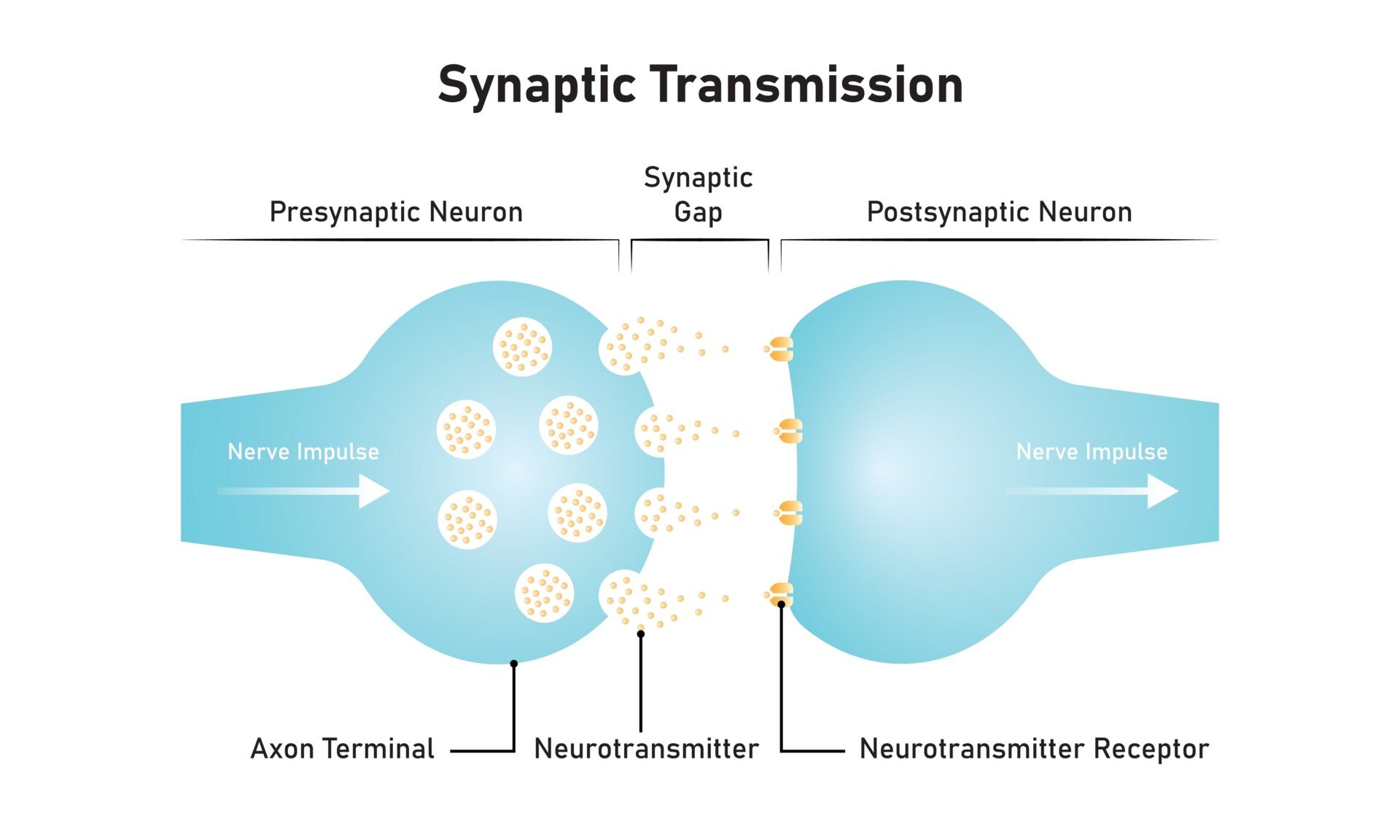Synaptic plasticity refers to the nervous system’s remarkable ability to change and adapt throughout life.
At its core, it involves alterations in the strength and structure of connections, known as synapses, between neurons.
This dynamic process can include the creation of new synapses, the pruning of those no longer needed, and even the generation of new neurons.

Neurotransmitters, the chemical messengers released across the synaptic gap, are crucial for these changes, facilitating processes like long-term potentiation, which sustains neuronal firing rates.
This fundamental property is vital for brain function, enabling learning and adaptation. It allows the brain to be extraordinarily adaptable.
For instance, when you learn a new skill like playing the violin, the brain areas associated with finger movements physically change and grow, showcasing this brain adaptation.
Similarly, forming new habits involves the continuous reshaping of neural circuits through synaptic plasticity.
Types of synaptic plasticity
There are two main types of synaptic plasticity based on how long the changes last:
Short-term synaptic plasticity
This involves quick adjustments that last from milliseconds to a few minutes. These often affect how much chemical message (neurotransmitter) is released from one neuron to another.
For example, a rapid burst of activity might temporarily increase (facilitation) or decrease (depression) the communication strength at a synapse
Long-term synaptic plasticity
These changes are longer-lasting, persisting for days, weeks, or even longer. There are two important forms:
- Long-Term Potentiation (LTP): This is a long-lasting increase in the strength of a synapse, first discovered in the early 1970s. When LTP occurs, the receiving neuron (postsynaptic neuron) becomes more likely to fire when the synapse is activated. This usually happens by adding more AMPA receptors (which receive signals) into the neuron after special receptors called NMDA receptors are activated. LTP strengthens synapses, making the neuron more easily activated.
- Long-Term Depression (LTD): This is the opposite of LTP—a long-lasting decrease in synaptic strength. LTD happens when AMPA receptors are removed from the synapse or when dendritic spines (tiny parts of the neuron receiving signals) shrink or disappear. LTD weakens synapses, making the neuron less easily activated.
Together, LTP and LTD help balance and fine-tune connections between neurons, shaping how the brain develops, learns, and remembers.
Mechanisms of Synaptic Plasticity
Synaptic plasticity involves biochemical and structural changes at the neuronal level:
- Chemical Signals and Receptors: NMDA receptor activation admits calcium into neurons, triggering changes such as adding or sensitizing AMPA receptors (LTP) or removing or desensitizing them (LTD).
- Structural Changes: Synapses physically remodel through dendritic spine growth or shrinkage. LTP can create new connections, while LTD eliminates or weakens existing ones.
- Protein Synthesis: Long-lasting plasticity requires gene activation and new proteins (e.g., brain-derived neurotrophic factor [BDNF]), enhancing synaptic health and supporting sustained changes.
- Timing and Activity Patterns: Spike-timing-dependent plasticity (STDP) adjusts synapses based on firing sequence—presynaptic firing just before postsynaptic activity promotes LTP, while reversed timing promotes LTD. Homeostatic plasticity globally adjusts synaptic strengths, maintaining neural balance.

Relevance to psychology
Synaptic plasticity is crucial for psychology because it explains how our brains literally change to support our thoughts, feelings, and behaviours.
Learning and Memory
This brain plasticity is the physical basis for all learning and memory formation. When we learn new information, like facts for a test, our brain’s synapses are strengthened.
For example, Long-Term Potentiation (LTP) is believed to be a key process in forming memories, while Long-Term Depression (LTD) helps refine existing memories by weakening unneeded connections.
Classical conditioning, where an association is learned between two stimuli (like Pavlov’s dogs), also relies on these plastic changes.
Brain Development and Neural Reorganization
Synaptic plasticity underlies brain development and neural reorganization throughout our lives.
In early life, there’s a rapid “blooming” of neural connections, followed by “pruning” which makes the brain more efficient for complex skills.
This adaptation allows the brain to respond to and be shaped by its environment.
Recovery and Adaptation
Plasticity also supports recovery and adaptation, especially after brain injury. The brain can reorganise itself after damage, and this neuroplasticity is why people can regain functions after a stroke.
However, when this process goes wrong, it can contribute to neuropsychiatric conditions like schizophrenia, where impaired plasticity is observed.
Factors influencing synaptic plasticity
Synaptic plasticity is influenced by many factors:
• Age and Developmental Stage: While the brain is most plastic when we are young, it continues to change and adapt throughout our entire lives. For instance, certain cognitive abilities and how the brain processes information can differ between adolescents and adults, reflecting ongoing development.
• Sleep Quality and Cognitive Function: Getting enough good quality sleep is crucial for brain health. Insufficient sleep or sleep disorders can significantly impair a wide range of cognitive functions, including memory and attention. Poor sleep can even reduce hippocampal synaptic plasticity, which is vital for memory formation.
• Stress and Mental Health: Chronic stress and past traumatic experiences, especially during childhood, can negatively impact brain circuits and reduce the brain’s ability to adapt, potentially increasing vulnerability to conditions like depression and schizophrenia.
• Exercise and Nutrition: Physical exercise promotes neuroplasticity, boosting cognitive function and stimulating important growth factors like BDNF that are involved in synaptic regulation, learning, and memory. Similarly, proper nutrition is essential for healthy brain development and function, with poor nutrition negatively affecting cognitive abilities
Disorders linked to synaptic plasticity
Alzheimer’s disease
This neurodegenerative condition is characterized by progressive cognitive decline, especially memory loss.
In Alzheimer’s, early impairment of synaptic plasticity, specifically a reduction in Long-Term Potentiation (LTP), is believed to be a major cause of memory deficits, even before widespread neuron damage.
Schizophrenia
This disorder involves symptoms like disorganized thinking and behaviour, as well as significant cognitive deficits. Disrupted synaptic plasticity is proposed as a core mechanism.
Individuals often show reduced connections (spine density) and problems with how their brain cells communicate, impacting their ability to process information, learn, and remember.
Depression and anxiety disorders
While not solely due to impaired plasticity, these conditions can involve difficulties in the brain’s ability to adapt and learn new, healthier responses.
Chronic stress and trauma can negatively affect brain circuits, reducing their capacity for adaptive change.
Individuals often experience cognitive impairment, such as problems with attention, processing information, and memory. This can reflect a struggle to “unlearn” unhelpful thought patterns or behaviours.
Ways to Enhance Synaptic Plasticity
Practical strategies to improve synaptic plasticity include:
- Lifelong Learning: Regular mental stimulation through learning languages, skills, or engaging activities promotes synaptic growth.
- Physical Exercise: Aerobic exercise increases BDNF levels, enhancing cognitive health and plasticity.
- Quality Sleep: Sufficient sleep consolidates memories, resets synaptic strengths, and supports learning.
- Stress Management: Mindfulness, therapy, and relaxation techniques reduce stress-induced impairments in plasticity.
- Healthy Diet: Nutrient-rich diets (e.g., Mediterranean diet) support neuronal health and cognitive aging.
- Social Interaction: Active social engagement stimulates diverse neural networks, enhancing plasticity.
- Cognitive Training: Targeted cognitive exercises can enhance specific skills, promoting corresponding neural changes.

